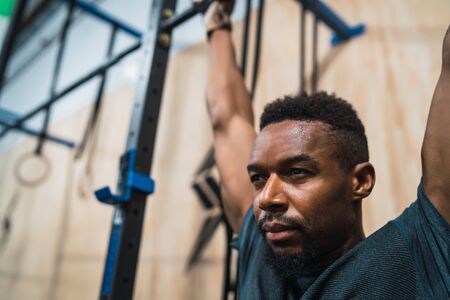1. Introduction to Physical Fitness in the Indian Context
In the rich tapestry of Indian culture, physical fitness is not merely an individual pursuit but a profound aspect of holistic well-being, as emphasized in the sacred Vedic scriptures. The ancient rishis taught that the human body is a divine vessel—an essential chariot for fulfilling one’s dharma and participating fully in life’s journey. This philosophy permeates daily village routines, where physical activity is woven into the fabric of existence, from dawn rituals to the evening’s communal gatherings. In rural Bharat, fitness is not approached as isolated exercise; rather, it is seamlessly integrated with agricultural work, dance, and traditional games, reflecting the interconnectedness advocated by Ayurveda and Yoga. These ancient sciences guide us to nurture the sharira (body), mana (mind), and atma (spirit) in harmony, recognizing that a healthy body forms the foundation for higher spiritual pursuits and vibrant community life. Thus, exploring the connection between physical fitness and mounts—be they horses, bullocks, or cycles—reveals deeper insights into how Indians have long honored strength, stamina, and balance as vehicles both literal and metaphorical on the path of self-realization.
2. Traditional Mounts: Horses, Bullocks, and Elephants
In the vast tapestry of Indian lifestyle, traditional mounts such as horses, bullocks, and elephants occupy an esteemed position. These majestic animals have not only served as primary means of transport and sources of agricultural strength but also hold deep cultural and spiritual significance in the hearts of the people. The connection between physical fitness and these mounts is rooted in centuries-old practices where both human and animal vitality were interdependent for prosperity and sustenance.
The Spiritual and Cultural Essence
Horses symbolize speed and valor, often associated with royal processions, warriors, and festivals like Ashwa Pooja. Bullocks are revered for their steadfastness and endurance, being central to rural livelihoods in yoking ploughs and carts—an embodiment of Dharma and service in agrarian society. Elephants, regarded as vehicles of Lord Ganesha and Indra, represent wisdom, strength, and auspiciousness; they grace temple rituals and royal events, signifying divine blessings.
Roles of Traditional Mounts in Indian Life
| Mount | Cultural Role | Spiritual Significance | Agricultural/Practical Use |
|---|---|---|---|
| Horse | Symbol of valor, used in weddings & festivals | Ashwa Pooja rituals; associated with Surya Devata (Sun God) | Transportation for warriors, messengers |
| Bullock | Pillar of rural economy; seen in fairs & village gatherings | Nandi as Shiva’s mount; symbol of patience & service | Tilling fields, pulling carts & irrigation devices |
| Elephant | Royal ceremonies; temple processions; Dussehra celebrations | Vehicle of Ganesha & Indra; signifies strength & auspiciousness | Lifting heavy loads, clearing forests (historically) |
Integration into Daily Life and Fitness Connection
The harmonious relationship between humans and these animals required not just mutual trust but also physical vigour from both sides. Handling a horse demanded agility and balance; working with bullocks necessitated endurance and coordinated effort; guiding an elephant called for immense patience and mental clarity. Thus, the culture around mounts naturally fostered a lifestyle where physical fitness was integral to daily life—a tradition that echoes through rural India even today.
![]()
3. Synergy Between Rider and Mount: A Yogic Perspective
In the sacred tradition of Bharat, the relationship between a human and their mount—be it a horse, bullock, or even an elephant—is seen as a divine partnership, deeply rooted in yogic and ayurvedic wisdom. Just as the yogi seeks harmony within the self through disciplined practice and balance, so too must the rider cultivate these same qualities to achieve true synergy with their mount.
The Balance of Body and Mind
Balance is not merely physical; it is a state where the mind (manas), body (sharira), and breath (prana) are in alignment. When a rider approaches their mount with centered awareness, each movement becomes an expression of inner equilibrium. The ancient texts remind us that “Yatha dehe tatha aswe”—as in the body, so in the horse. If the rider’s posture is upright and their mind calm, the mount responds with grace and steadiness, reflecting the subtle energies at play.
Discipline: The Key to Mutual Respect
Discipline (niyama) forms the foundation of this connection. Through regular sadhana (practice), whether it is yoga asanas for flexibility or pranayama for breath control, the rider develops mastery over their own faculties. This self-discipline radiates outward, fostering trust and respect between human and animal. In Indian villages, children are taught from a young age to approach animals with humility and consistency—qualities echoed in both Patanjali’s Yoga Sutras and our rural traditions.
Physical Conditioning: Building Stamina Together
Physical conditioning is revered not just for personal health but as a means to honor one’s mount. Ayurveda emphasizes building ojas (vital energy) through proper diet, exercise, and rest. A well-conditioned rider can endure long journeys across the subcontinent’s varied terrains alongside their loyal steed. In this shared journey, both bodies are attuned to each other’s rhythms—a living testament to the Vedic ideal of unity between jiva (the individual soul) and prakriti (nature).
Thus, the synergy between rider and mount becomes a moving meditation—a dance of mutual balance, discipline, and vitality—reflecting the timeless connection celebrated in Indian lifestyle.
4. Mounts in Festivals and Rituals
In the vast tapestry of Indian culture, mounts occupy a place of profound reverence, especially within festivals, processions, and religious ceremonies. These vibrant occasions reveal the intricate connection between physical fitness and spiritual symbolism—a dual celebration that honours both bodily strength and divine presence.
The Role of Mounts in Celebratory Traditions
From North to South, East to West, Indian festivals often showcase majestic animals—horses, elephants, camels, and even bulls—as the sacred vahanas (mounts) for deities or important figures. The act of riding or leading these mounts requires not only spiritual devotion but also physical discipline, balance, and stamina. For instance, during the famed Mysore Dasara procession, decorated elephants carry the idol of Goddess Chamundeshwari through throngs of devotees, symbolizing the fusion of earthly vigor and celestial grace.
Table: Prominent Festivals Featuring Mounts
| Festival | Mount Used | Physical Aspect | Spiritual Significance |
|---|---|---|---|
| Mysore Dasara | Elephant | Strength & Endurance | Goddess Chamundeshwari’s Procession |
| Pongal (Jallikattu) | Bull | Courage & Agility | Honouring Cattle & Nature Spirits |
| Palkhi Yatra (Maharashtra) | Horse | Discipline & Harmony | Sant Dnyaneshwar’s Journey |
| Kumbh Mela Processions | Elephant/Horse/Camel | Leadership & Stamina | Sadhus Leading Pilgrims |
Ceremonial Processions: A Testimony to Fitness and Devotion
The spectacle of processions—be it the Rath Yatra in Puri or the grand wedding baraats—often features individuals riding atop horses or elephants. These roles are not bestowed lightly; the chosen must demonstrate physical fitness, poise, and an ability to harmonize with their mount. Such acts symbolize mastery over one’s body and senses, echoing Vedic principles where self-control is revered as a path to higher consciousness.
Bodily Prowess Meets Spiritual Duty
The synergy between the rider and the mount during rituals is seen as an allegory for life itself—the disciplined body (the chariot) led by wisdom (the charioteer). This ancient motif finds resonance in texts like the Bhagavad Gita, where Lord Krishna guides Arjuna’s chariot into battle. In every festival or ceremony where mounts play a part, the community witnesses how physical prowess amplifies devotion, transforming each event into a living scripture that celebrates both earthly health and divine connection.
5. Folk Games and Rural Traditions
The Essence of Physical Fitness in Rural India
In the sacred soils of Bharat, folk games are not mere pastimes; they are rituals that weave together the body, spirit, and the animal world. Traditional rural sports such as Kambala, the ancient buffalo race of Karnataka, and tent pegging, a legacy of warrior clans across North India, showcase a profound synergy between physical prowess and the harmonious partnership with mounts.
Kambala: The Dance of Mud and Muscle
Under the golden gaze of Surya, Kambala transforms paddy fields into vibrant arenas where man and buffalo sprint as one. Here, physical fitness is not just strength but an art—balance, endurance, and agility unite the farmer with his buffalo. The rhythm of hooves in slush is akin to a Vedic hymn—affirming that true fitness is holistic, cultivated through daily connection with nature and animals.
Tent Pegging: Martial Grace and Animal Bond
Tent pegging, rooted in Rajputana valor, tests both horseman and steed. Galloping at breathtaking speed, riders spear wooden pegs—a trial demanding sharp reflexes, core stability, and unwavering trust in their horse. This sport is a living yantra (mystic diagram) of cooperation; the rider’s intent flows through reins to the mount, echoing ancient lessons that strength arises from unity with one’s companion animal.
Traditions as Catalysts for Wellbeing
These rural games are more than competition—they are communal yajnas (offerings), fostering fitness in body while deepening spiritual bonds with animals. Each event is an affirmation of dharma (righteous duty), where respect for one’s mount nurtures empathy, discipline, and enduring vitality. In every village festival or harvest celebration, the connection between physical fitness and mounts is celebrated as a living tradition—an eternal thread in the rich tapestry of Indian lifestyle.
6. Modern Interpretation: Fitness, Urbanisation, and Animal Welfare
As India strides forward into the 21st century, the tapestry of its lifestyle is being rewoven to blend ancient wisdom with modern realities. Today, physical fitness is no longer confined to the open fields or rural akharas; it finds expression in urban gyms, yoga studios, and jogging parks. Yet, the spirit of maintaining harmony between body, mind, and environment—rooted in Vedic tradition—remains a guiding principle for many urban Indians.
With rapid urbanisation, the role of mounts—be it horses, elephants, or even humble bullocks—has significantly diminished in daily life. However, their symbolic presence endures. In cities like Mumbai and Bengaluru, one might find equestrian clubs or animal-assisted therapy centres where the connection between human wellbeing and animal companionship echoes the traditions of yore. These practices reflect a yearning to preserve the ancient bond while adapting it to fit contemporary lifestyles.
Adapting Ancient Principles in Urban Lifestyles
Urban Indians increasingly seek balance amidst fast-paced routines by embracing time-honoured wellness regimes such as yoga and Ayurveda. The discipline of caring for animals, once integral to rural households, now inspires new forms of engagement—volunteering at animal shelters, adopting stray dogs, or supporting ethical dairy practices. These actions reflect an evolving understanding of seva (selfless service) towards all beings.
Ethics and Changing Values
Modern society also brings ethical considerations to the fore. The use of animals for labour or ceremonial purposes is being re-examined through the lens of animal rights and welfare. Festivals that once celebrated processions with decorated mounts are now observed with increased awareness about compassionate treatment and responsible care. This shift signifies not only a change in values but also a deeper alignment with ahimsa—the principle of non-violence cherished in Indian philosophy.
The Enduring Legacy
Thus, the Indian approach to physical fitness and animal companionship continues to evolve. Whether through mindful exercise routines or conscious animal welfare efforts, urban dwellers reinterpret age-old connections in ways that honour both tradition and progress. This harmonious adaptation ensures that the wisdom of the past remains vibrant within Indias ever-changing societal landscape.


